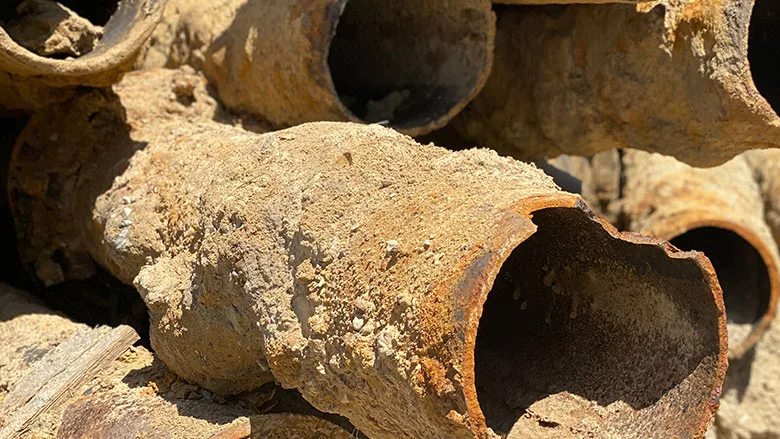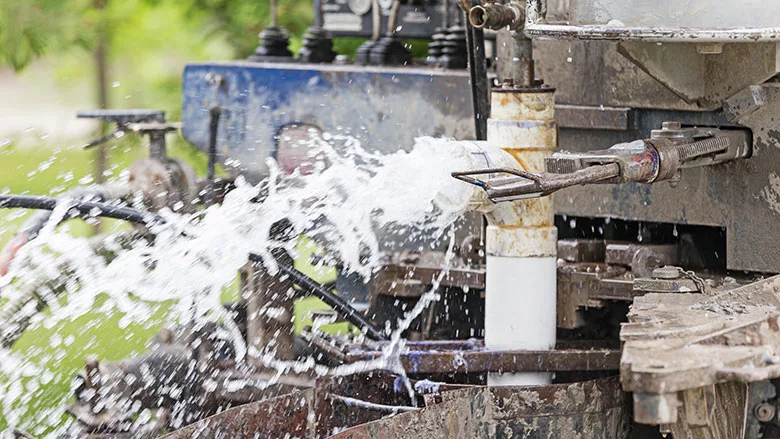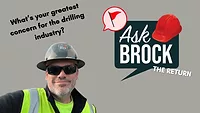For the Drilling Industry, Perception Matters
From Lead to PFAS, Information About Groundwater is Everywhere

Lead service lines replaced as part of the Flint, Michigan, water crisis. Events like that can shape public perceptions of water, groundwater and drilling — in ways both fair and not-so-fair. Drillers and others in this industry can and should help inform those conversations.
Source: Getty Images

Professional development for drilling professionals can (naturally) focus a lot on how to get water out of the ground, but not so much on what people think of that water or our industry as a whole.
Source: Getty Images
What is different about the drilling industry today versus 30 years ago? Better yet, what do you quantify as a significant change from the start of the 21st century through the middle of 2022?
No matter the method of drilling, when a good driller encounters a significant change in conditions, they stop and assess the situation. What if the drilling industry adopted that as a best practice? What if we assessed significant changes affecting our business and then focused professional development on those topics?
For example, think about the rapid change in the availability of information about water. That change alone has a much bigger impact on the industry than 30 years ago. Major news outlets and social media make that information, good and bad, available to anyone, anywhere. As an industry, we should focus professional development on staying informed, advocating in our areas of expertise and educating our customers (just as much as we focus on drilling, safety and regulation).
Today we have available endless information from the standard TV/radio to our inbox, to search engines leading us to videos, podcasts and websites. News and social media drive what people believe and how they feel about the drilling industry. Over the last three decades, many drilling industry issues have prompted a social outcry. However, the two significant impacts in the past five to seven years have been the lead water crisis in aging cities across the country and per- and polyfluoroalkyl substances (PFAS) contaminating groundwater.
Flint, Michigan, brought the lead water crisis to the nation’s attention. Suddenly, people started discussions about water quality in homes across the nation. Every time you turned on the TV, radio or computer you heard, “Our water has lead. What are we going to do about it?” Although we need to have a critical discussion about our country’s water infrastructure, I think this coverage led many individuals to believe water plants pumped water containing lead into homes. In Flint, the investigation traced the lead contamination to aging pipe infrastructure from the early 1900s combined with the corrosiveness of Flint River water. While this situation affected a public water supply, it caused the trust many people place in water to waver — regardless of where that water comes from. That’s a natural reaction: Any level of lead in the blood has an impact and children especially can see long-term health effects like damage to cognitive development.
Today we have available endless information from the standard TV/radio to our inbox, to search engines leading us to videos, podcasts and websites. News and social media drive what people believe and how they feel about the drilling industry.
The other recent and significant impact on the perception of the industry among the public comes from PFAS. These “forever” chemicals came into the spotlight more than a decade ago, but awareness of them has continued to pick up speed throughout the country. As we wait for the EPA to set federal standards, states have debated acceptable parts per million or trillion in groundwater. Meanwhile, news stories about contaminated land, groundwater and lawsuits against companies who did not disclose the known environmental and health concerns dominate coverage of this issue.
PFAS is a severe situation, but I believe we as an industry have become numb to it over years of discussions with no big resolution. However, we cannot shove our head into the nearest drilled hole and hope PFAS goes away. If we, as the drilling industry, ignore PFAS, we leave other groups to solve it for us. Often that solution involves extending the public water supply to affected areas, eliminating the need for private water wells.
Beyond lead and forever chemicals, I consider water regulation the most prominent topic in the groundwater drilling industry, with news stories and debates that have divided the country. The almost two-decade-long drought in the western United States brought the water quantity debate to the front page. Population growth and climate change continue to fuel discussions on how surface water and groundwater connect and who ultimately controls them. Like the country, the drilling community splits between those who work (and live) in water-rich and water-scarce regions. By 2025, two-thirds of the country will be experiencing a water shortage or expecting one. Experts expect the population of the U.S. to increase by 120 million — to roughly 458 million people — by 2050.
Right now, in mid-2022, the EPA and Army Corps of Engineers just wrapped up roundtables on the future of the Waters of the United States (WOTUS). Those roundtables will inform water laws for years to come. At the same time, Nebraska plans a canal project to secure its water allotment from the South Platt watershed. California cracks down on water usage while seeking alternative water supplies. Federal authorities have decide to hold back 2 million acre-feet of water in the Upper Colorado River watershed, affecting downstream states like Arizona and California. (For reference, one acre-foot amounts to 325,851 gallons— enough water for one average American for nearly 12 years.) As western droughts rage on, holding back water remains the only triage method available as experts try to calculate reserves. Many water compacts throughout the U.S. are 100 years old. Look at climate studies done by NASA or the EPA, and you see significant changes to our climate and weather in the past 30 years — changes not accounted for in those compacts. Drought may seem like a new normal, but these are unprecedented times.
Who wins the debate over controlling surface water and groundwater? If we look at the numbers, the majority wins, with most of the voting population relying on public water supplies. The EPA estimates the U.S. has more than 23 million private water wells serving about 15% of the voting population. The states with the most water scarcity also have the largest voices in congress. Beyond the public, the entities with the loudest voices employ money, media and lobbyists to advocate for their best interests. Water is bipartisan, requires realistic goals informed by science and, most importantly, requires the drilling industry’s constant attention when it comes to legislation.
As drillers, we take pride in doing most of our work with our hands. Time has come for us to use our hands to develop our knowledge of what society views as the essential aspects of the drilling industry. Yet, from a professional development standpoint, we focus on the water that supports our businesses and community. Yes, at the national level, we have one-to-two-hour conversations twice a year, but then we return to the shop and get back to work. We often lose the inspiration and initiative to develop further and share what we have learned. As drilling professionals, we must advocate for what is essential to our business and the industry. The only way we do that is to stay updated with the latest news, social opinions and legislation. It is time to use our hands, minds and voices to advocate for what is right.
Looking for a reprint of this article?
From high-res PDFs to custom plaques, order your copy today!





